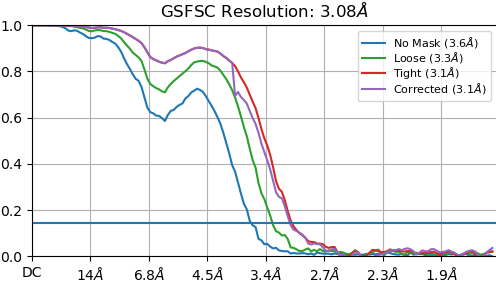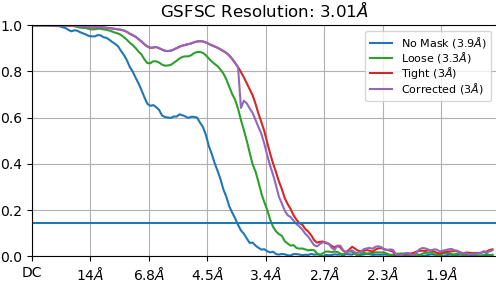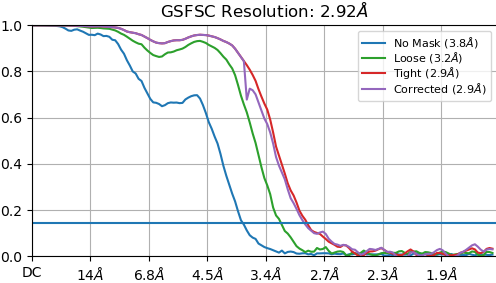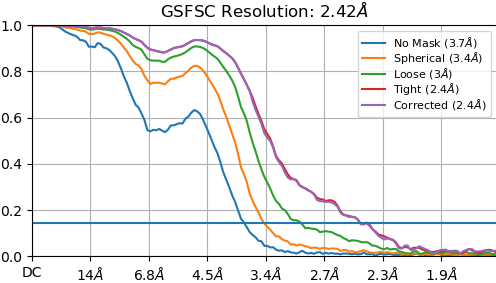I did what you suggested, and it looks bit weird.
In Chimera X, I loaded original half A (J1321) and two local-refined half A’s (J1360 and J1363) and composited them using vop maximum #1 #2 #3. I repeated the procedure to make a composite B map. I imported two composite half maps and estimated the local resolution (default parameters at 0.5 FSC threshold) using composite half A and B as well as mask refine from J1321. I referenced Local res. estimate with imported map error. I have attached the FSC curves of all relevant refinement jobs.
J1321 NU-refinement of original reconstruction

J1360 Local Refinement (NEW!) of subunit A (without particle subtraction)

J1363 Local Refinement (NEW!) of subunit B (without particle subtraction)

J1388 Local Resolution Estimation

I have performed the identical procedure on a different map and also obtained very high resolution at 0.5 FSC threshold.
NU-refinement: 2.91 Å
Local Refinement 1: 2.74 Å
Local Refinement 2: 2.76 Å
Local Resolution Estimation: 2.14 Å
Is this the expected behavior?
Thank you.